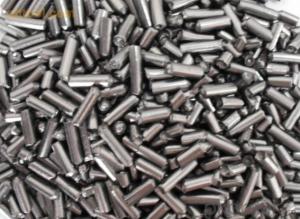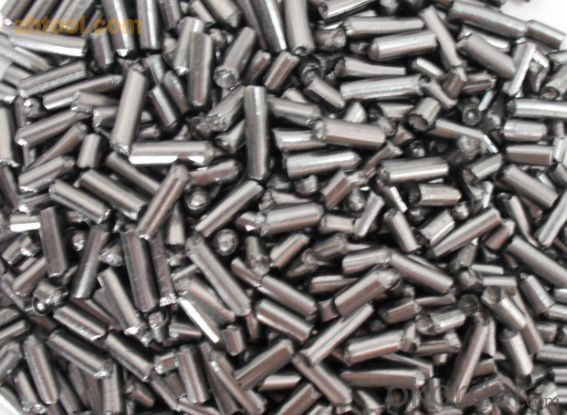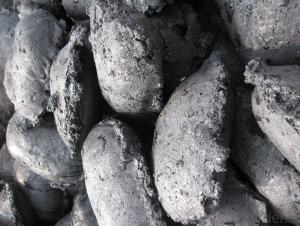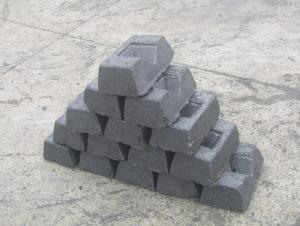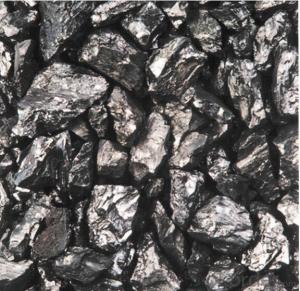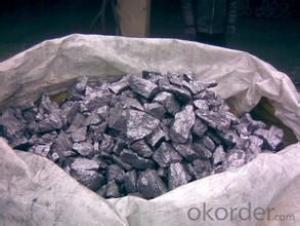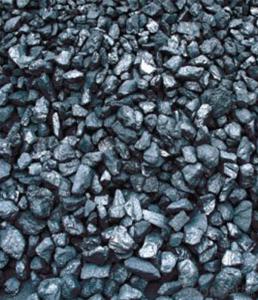Carbon Additve FC 90-95% Specifications
- Loading Port:
- Tianjin
- Payment Terms:
- TT or LC
- Min Order Qty:
- 20 m.t.
- Supply Capability:
- 10000 m.t./month
OKorder Service Pledge
OKorder Financial Service
You Might Also Like
Quick Details
Place of Origin: Ningxia, China (Mainland)
Application: steel making
Shape: granule
Dimensions: FC90-95%
Product Type: Carbon Additive
C Content (%): 90-95% MIN
Working Temperature: -
S Content (%): 0.5%MAX
N Content (%): -
H Content (%): 0.6%MAX
Ash Content (%): 8.5%MAX
Volatile: 2%MAX
ADVANTAGE: low ash & sulfur
COLOR: Black
RAW MATERIAL: TaiXi anthracite
Packaging & Delivery
| Packaging Details: | In 1MT plastic woven bag. |
|---|---|
| Delivery Detail: | 30-40DAYS |
Specifications
Carbon Additve FC 90-95% Specifications
Carbon Additve low Ash,S,P
FC>95% ASH<4% S<0.3%
It is made from TaiXi anthracite.
instead of pertrol coke reduce the cost
Structure
Carbon Additve FC 90-95% Specifications
Shape: granule
Dimensions: FC90-95%
Product Type: Carbon Additive
C Content (%): 90-95% MIN
Working Temperature: -
S Content (%): 0.5%MAX
N Content (%): -
H Content (%): 0.6%MAX
Ash Content (%): 8.5%MAX
Volatile: 2%MAX
ADVANTAGE: low ash & sulfur
COLOR: Black
RAW MATERIAL: TaiXi anthracite
Feature
Carbon Additve FC 90-95% Specifications
Specifications (%): | ||||||
Grade | F.C | Ash | V.M | Moisture | S | Size |
CR-95 | ≥95 | <4 | <1 | <1 | <0.3 | 0-30mm |
CR-94 | ≥94 | <4 | <1 | <1 | <0.3 | |
CR-93 | ≥93 | <6 | <1 | <1 | <0.4 | |
CR-92 | ≥92 | <7 | <1 | <1 | <0.4 | |
CR-91 | ≥91 | <8 | <1 | <1 | <0.4 | |
CR-90 | ≥90 | <8.5 | <1.5 | <2 | <0.4 | |
Image
Carbon Additve FC 90-95% Specifications
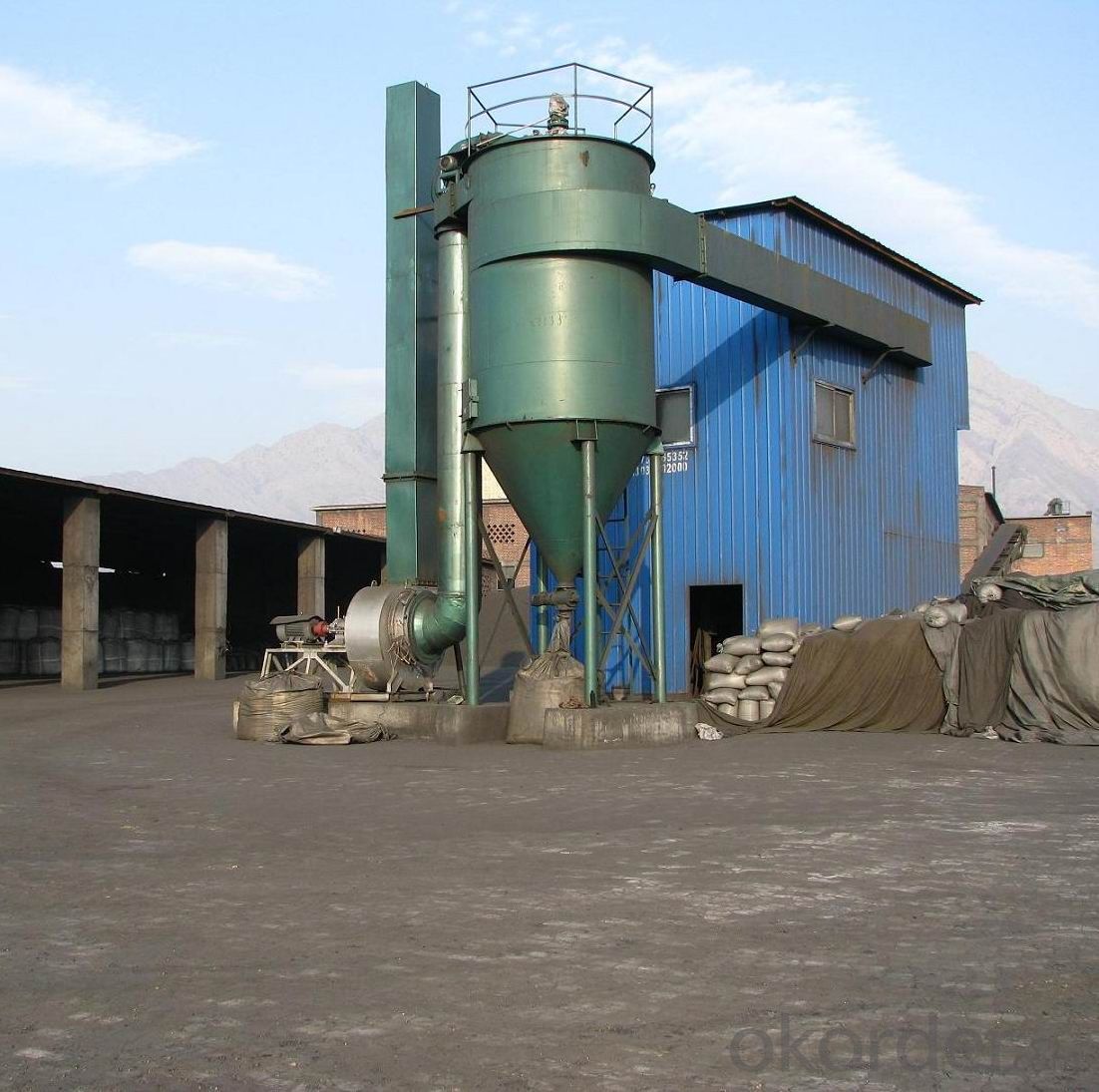

FAQ:
Carbon Additve FC 90-95% Specifications
Why we adopt carbon additive?
Carbon Additives used as additive in steel making process. It made from well-selected Tai Xi anthracite which is low in content of ash, sulphur, phosphorus, high heat productivity, high chemically activation.
Mainly industry property of it is: instead of traditional pertroleum coal of Carbon Additives, reduce the cost of steelmaking.
Advantage:
Carbon Additve FC 90-95% Specifications
1.High quality and competitive price.
2.Timely delivery.
3.If any item you like. Please contact us.
Your sincere inquiries are typically answered within 24 hours.
- Q: What are the consequences of increased carbon emissions on technological advancements?
- The consequences of increased carbon emissions on technological advancements can be both positive and negative. On one hand, the increased focus on reducing carbon emissions has spurred innovation in clean technology and renewable energy sources. This has led to advancements in technologies such as solar panels, wind turbines, and electric vehicles, which are considered more environmentally friendly alternatives to traditional energy sources. These advancements have the potential to create new industries, generate jobs, and promote sustainable development. On the other hand, increased carbon emissions can have negative consequences on technological advancements. The rising levels of carbon dioxide in the atmosphere contribute to climate change, which poses significant challenges to various sectors, including technology. Extreme weather events, such as hurricanes and wildfires, can damage infrastructure and disrupt technological systems. In addition, higher temperatures can affect the efficiency of electronic devices, leading to increased energy consumption and reduced performance. Furthermore, the need to mitigate and adapt to climate change through the development of clean technologies requires significant financial investments. This can divert resources from other areas of technological innovation and research, limiting advancements in fields such as artificial intelligence, biotechnology, or space exploration. As a result, the focus on addressing carbon emissions may reduce the overall pace of progress in certain technological areas. Overall, the consequences of increased carbon emissions on technological advancements are complex and multifaceted. While they have driven innovation in clean technologies, they have also presented challenges and trade-offs in terms of resource allocation and the impact of climate change on technological infrastructure. Efforts to reduce carbon emissions need to be balanced with ensuring continued progress in other technological fields to achieve a sustainable and technologically advanced future.
- Q: What are the impacts of carbon emissions on the stability of rainforests?
- Carbon emissions have significant impacts on the stability of rainforests. Increased levels of carbon dioxide in the atmosphere due to emissions contribute to global warming, leading to changes in rainfall patterns and increased temperatures. These changes can negatively affect the delicate balance of rainforest ecosystems, causing droughts, wildfires, and loss of biodiversity. Additionally, carbon emissions contribute to the acidification of oceans, which can harm marine life that rainforests depend on, such as coral reefs. Overall, carbon emissions pose a serious threat to the stability and long-term survival of rainforests.
- Q: What is the relationship between carbon and climate change?
- The relationship between carbon and climate change is primarily based on the role of carbon dioxide (CO2) as a greenhouse gas. Carbon dioxide is naturally present in the Earth's atmosphere and is essential for maintaining a habitable climate by trapping heat from the sun and preventing it from escaping into space. However, human activities, particularly the burning of fossil fuels such as coal, oil, and natural gas, have significantly increased CO2 levels in the atmosphere. The excess CO2 acts as an additional blanket, trapping more heat and leading to a phenomenon known as the greenhouse effect. This increase in greenhouse gases, including CO2, methane, and nitrous oxide, is causing global temperatures to rise, resulting in climate change. The higher temperatures disrupt weather patterns, leading to more frequent and severe extreme weather events such as hurricanes, droughts, heatwaves, and heavy rainfall. Furthermore, the excessive CO2 in the atmosphere is also being absorbed by the world's oceans, leading to ocean acidification. This process alters the chemistry of seawater, negatively impacting marine life, coral reefs, and other ecosystems. Reducing carbon emissions and transitioning to renewable energy sources is crucial in mitigating climate change. By decreasing the amount of CO2 released into the atmosphere, we can slow down and potentially reverse the adverse effects of climate change. Additionally, efforts to conserve and restore forests, which act as carbon sinks by absorbing CO2, are also vital in addressing the carbon-climate relationship.
- Q: What is the effect of carbon equivalent on welding?
- The carbon equivalent of less than 0.4%, good weldability; in 0.4~0.6%, poor weldability, welding preheating and other measures to prevent cracks; more than 0.6 words, when welding needs higher temperature and strict technical measures! PS: carbon equivalent =C+Mn/6+ (Ni+Cu) /15+ (Cr+Mo+V) /5, Q235 carbon content in 0.14%~0.22% between, widely used by the company seems to be Q235B, carbon content between 0.12~0.20%
- Q: Excuse me, carbon steel, carbon steel pipe, seamless steel pipe, spiral steel pipe, what is the difference?
- These nouns do not seem to be a method of division.Carbon steel pipe: refers to the pipe material is carbon steel, from the material on the pipeline division. A pipe that is different from stainless steel pipes and other materials;Carbon steel plate: refers to the pipe rolls are made of carbon steel, divided from making method. It is different from seamless steel tube and spiral steel tube.
- Q: How does carbon cycle through the environment?
- The carbon cycle is the process by which carbon moves between the atmosphere, land, oceans, and living organisms in a continuous cycle. It is crucial for maintaining a stable climate and supporting life on Earth. The cycle begins with carbon dioxide (CO2) in the atmosphere, which is absorbed by plants during photosynthesis. Through this process, plants convert CO2 into organic carbon compounds, such as sugars and carbohydrates, which they use for growth and energy. This carbon is then passed along the food chain as animals consume plants or other animals. When plants and animals die or excrete waste, their organic matter decomposes, releasing carbon back into the environment. This decomposition process is carried out by microorganisms, such as bacteria and fungi, which break down the organic matter and release carbon dioxide as a byproduct. Some carbon may be stored in the soil for long periods, depending on factors like temperature and moisture. This stored carbon in the soil can be released back into the atmosphere through processes like microbial respiration or erosion. Another way carbon returns to the atmosphere is through the burning of fossil fuels such as coal, oil, and natural gas. When these fuels are burned for energy, they release carbon dioxide into the atmosphere, contributing to the greenhouse effect and climate change. The oceans also play a crucial role in the carbon cycle. They absorb a significant amount of carbon dioxide from the atmosphere through a process called carbon sequestration. Marine plants, such as phytoplankton, also photosynthesize and store carbon in their tissues. When these organisms die, they sink to the ocean floor, where the carbon can be stored for long periods in the form of sediment or dissolved in the water. Oceanic circulation and biological processes also redistribute carbon throughout the oceans, with surface water exchanging carbon with the atmosphere. Additionally, the oceans act as a carbon sink, as they can store vast amounts of carbon dioxide, helping to regulate its levels in the atmosphere. Overall, the carbon cycle is a complex and interconnected process that involves various natural and human activities. Understanding and managing this cycle is crucial for mitigating climate change and maintaining the health of our environment.
- Q: What is carbon fixation?
- Carbon fixation is the process by which carbon dioxide (CO2) from the atmosphere is converted into organic compounds by living organisms, mainly plants and algae. It is an essential part of the natural carbon cycle and plays a crucial role in sustaining life on Earth. During photosynthesis, green plants use sunlight, water, and CO2 to produce glucose and oxygen. This glucose serves as a building block for other organic molecules such as carbohydrates, lipids, and proteins. Carbon fixation is not only important for plant growth and development but also for the overall balance of atmospheric CO2 levels. It helps to mitigate the greenhouse effect by removing CO2 from the atmosphere and storing it in biomass or in the soil. Additionally, carbon fixation is a vital source of energy and nutrients for other organisms that consume plants or algae. Overall, carbon fixation is a fundamental process that contributes to the stability and functioning of ecosystems and has significant implications for climate change and the global carbon cycle.
- Q: How does carbon impact the prevalence of ocean acidification?
- Climate change is caused by carbon dioxide, a greenhouse gas. When humans release excess carbon dioxide into the atmosphere through activities like burning fossil fuels, a large portion of it is absorbed by the oceans. This absorption leads to a chemical reaction that increases the amount of hydrogen ions in the water, resulting in a decrease in pH levels. We call this process ocean acidification. When carbon dioxide dissolves in seawater, it creates carbonic acid, which then breaks apart into hydrogen ions and bicarbonate ions. The increased concentration of hydrogen ions reduces the availability of carbonate ions, which are essential for shell-forming organisms such as corals, mollusks, and some plankton species. These organisms rely on carbonate ions to construct and maintain their shells or skeletons. As ocean acidification progresses, the saturation level of calcium carbonate, a crucial mineral for shell production, decreases. This makes it more challenging for marine organisms to build their shells, leading to slower growth rates and weaker structures. Under extreme acidification conditions, some organisms like corals and oysters may even experience the dissolution of their shells. The effects of ocean acidification extend beyond shell-building organisms. It disrupts the delicate balance of various species and their interactions within the marine ecosystem. For instance, the reduced availability of carbonate ions can impact the growth and survival of phytoplankton, which are the foundation of the marine food chain. Consequently, this disruption can have a cascading effect on fish populations and other marine organisms. Additionally, ocean acidification can affect the physiological functions of marine organisms, including their reproduction, behavior, and immune systems. Some studies suggest that acidification can impair the ability of certain fish species to detect predators or navigate, making them more susceptible to predation and decreasing their chances of survival. To summarize, human carbon emissions contribute to ocean acidification. The increased concentration of carbon dioxide in the atmosphere is absorbed by the oceans, leading to lower pH levels and reduced availability of carbonate ions. This process has significant implications for shell-building organisms, the marine food chain, and the overall health and biodiversity of our oceans. It is crucial to address carbon emissions and mitigate climate change to minimize the impacts of ocean acidification and safeguard the well-being of marine ecosystems.
- Q: How is activated carbon produced?
- Activated carbon is produced through a process called activation, which involves heating carbon-rich materials, such as wood, coal, or coconut shells, at high temperatures in the absence of oxygen. There are two main methods of activation: physical activation and chemical activation. In physical activation, the carbon-rich material is first carbonized by heating it to a high temperature. This creates a carbonized char with a high carbon content. The char is then treated with an oxidizing gas, such as steam or carbon dioxide, at temperatures between 600 to 900 degrees Celsius. This causes the char to expand and develop a highly porous structure. The resulting material is then washed and dried to remove any impurities, resulting in activated carbon. Chemical activation, on the other hand, involves impregnating the carbon-rich material with a chemical activating agent, such as phosphoric acid, zinc chloride, or potassium hydroxide. The impregnated material is then heated to temperatures ranging from 400 to 800 degrees Celsius. This process chemically reacts with the carbon, creating a highly porous structure. The activated carbon is then washed and dried to remove any residual chemicals. Both physical and chemical activation methods result in the production of activated carbon with a large surface area and a network of pores. These pores enhance the adsorption capacity of the activated carbon, allowing it to effectively trap and remove impurities, contaminants, and pollutants from gases and liquids.
- Q: What is the carbon footprint?
- The carbon footprint is a measure of the total greenhouse gases, specifically carbon dioxide (CO2), that are released into the atmosphere due to human activities. It quantifies the impact individuals, organizations, or countries have on the environment by contributing to climate change. This impact encompasses both direct emissions from burning fossil fuels for transportation, heating, and electricity, as well as indirect emissions from the production and transportation of goods and services we consume. Measured in units of carbon dioxide equivalent (CO2e), the carbon footprint serves as a vital tool for assessing and managing our environmental influence. By comprehending and diminishing our carbon footprint, we can alleviate climate change and strive for a more sustainable future.
Send your message to us
Carbon Additve FC 90-95% Specifications
- Loading Port:
- Tianjin
- Payment Terms:
- TT or LC
- Min Order Qty:
- 20 m.t.
- Supply Capability:
- 10000 m.t./month
OKorder Service Pledge
OKorder Financial Service
Similar products
Hot products
Hot Searches
Related keywords
